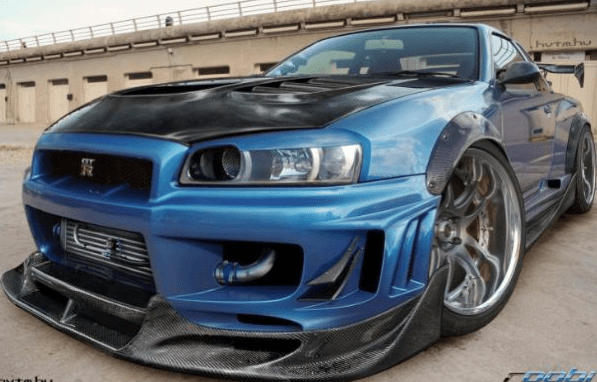USED EVO 4 FOR CANADA-SOME FREE TIPS
Posted by admin at 24 April, at 19 : 08 PM Print

From August we will have the MITSUBISHI LANCER EVOLUTION 4 (EVO 4) ready for Export to Canada. This is a great development for the EVO fans in Canada as the car was huge upgrade for the EVO Line (SEE BELOW)
You might say it is too early to think about the export of this Model as the cars first production date was in August 1996, this is not true. ELITE AUTO EXPORT JAPAN can buy and store your car right now for EXPORT in July -this makes sense for a number of reasons.
* We see prices SIGNIFICANTLY INCREASE BY UP TO 60% for freshly available 15 year old models as the Canadian market jumps on the new cars-EVERY YEAR THIS HAPPENS.
* We also see SMART USED CAR DEALERS with experience and entrepreneurial nous, buying the cars a month or two earlier- avoiding a up to potential 60% Jump in prices once the rest of the Canadians Individuals catch on.
* These points are across the total Canadian Market, stay ahead of the 15 year rule, and you will be WINNING all day.
A great example of this was the BNE33 NISSAN SKYLINES from Last year. As soon as the Early 1995 Used Nissan Skyline became available for the Canadian Market, prices for those cars immediately doubled. We had already been buying a couple prime units in the months leading up to this date for our Clients, so when the cars DID become available, our dealers were already prepared and had the first cars arrive into the country, maximising their returns.
Please contact us at [email protected] for more info.
Production August 1996–January 1998
Platform CN9A
Transmission 5-speed manual
Wheelbase 2,510 mm (98.8 in)
Length 4,330 mm (170.5 in)
Width 1,690 mm (66.5 in)
Height 1,415 mm (55.7 in)
Curb weight 1,260–1,350 kg (2,778–2,976 lb)
The Lancer platform was completely changed in 1996, and along with it the Evolution, which had become extremely popular throughout the world. The engine and transaxle was rotated 180° to better balance the weight and eliminate torque steer. There were two versions available, The RS and GSR. The RS version was produced as a competition car with a limited-slip front differential and a friction type LSD at the rear. It also came with GLX seats and a choice of either 16″ or 17″ OZ light weight racing wheels. The RS also had wind up windows, optional air conditioning in some models, and a few extra brace bars to strengthen the chassis, one behind the front grill and the other across the boot floor. The RS also had thinner body panels and glass. The GSR and the RS shared a new twin scroll turbocharger which helped to increase power to 280 PS (206 kW; 276 hp) at 6,500 rpm and 330 N·m (243 lb·ft) of torque at 4,000 rpm. Mitsubishi’s new Active Yaw Control appeared as a factory option on the GSR model, which used steering, throttle input sensors and g sensors to computer-hydraulically control torque split individually to the rear wheels and as a result the 10000 Evolution IVs produced all sold quickly. The Evolution IV can be distinguished by its two large fog lights in the front bumper (option on RS version), and the newly designed tail lights on the rear, which became a standard design to Evolution V, which would become yet another trademark of the Evolution series. This new generation was slightly heavier than previous Evos—the GSR in particular due to the added technology systems—but to counter this the car produced even more power—the weight of the RS being 1,260 kg (2,778 lb) and the GSR being 1,345 kg (2,965 lb).
Best Regards,
The Elite Auto Export Japan Team.


